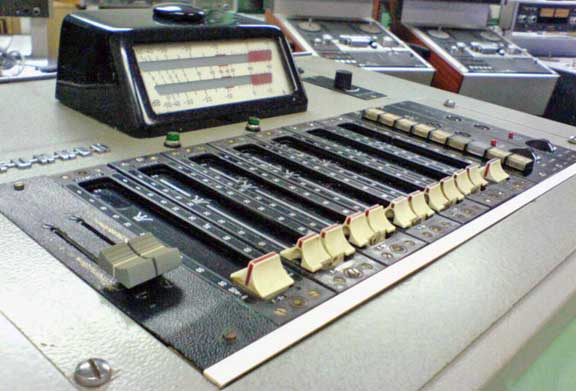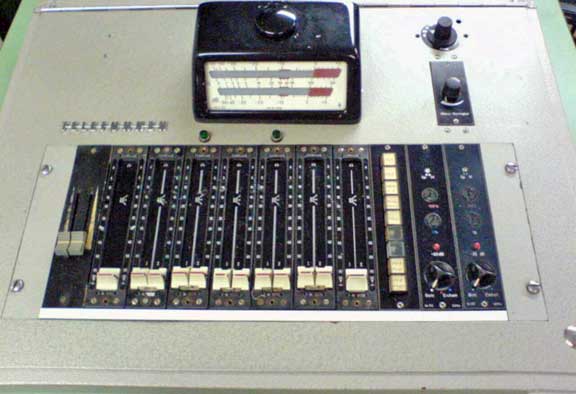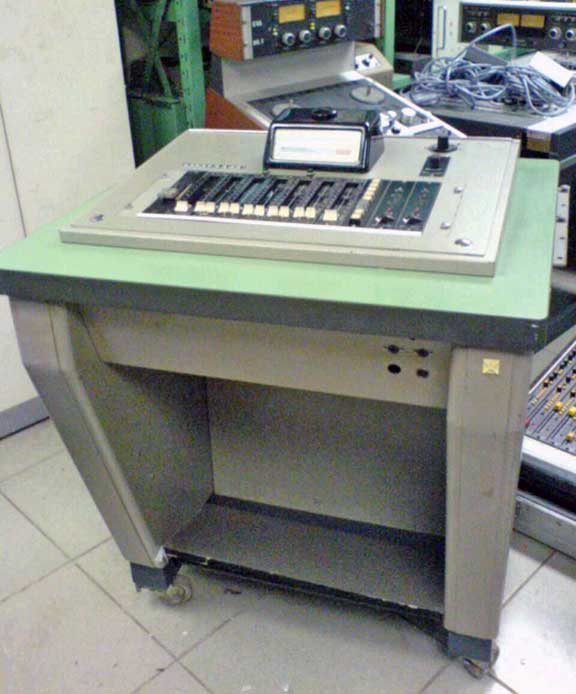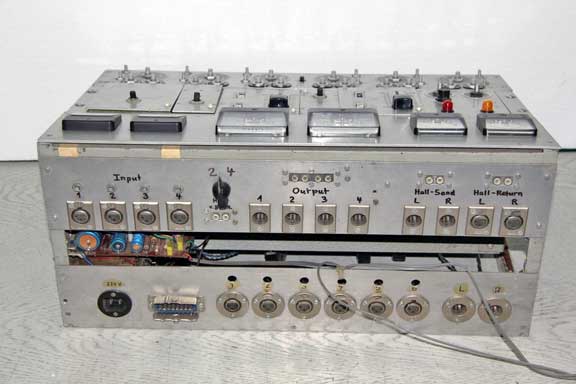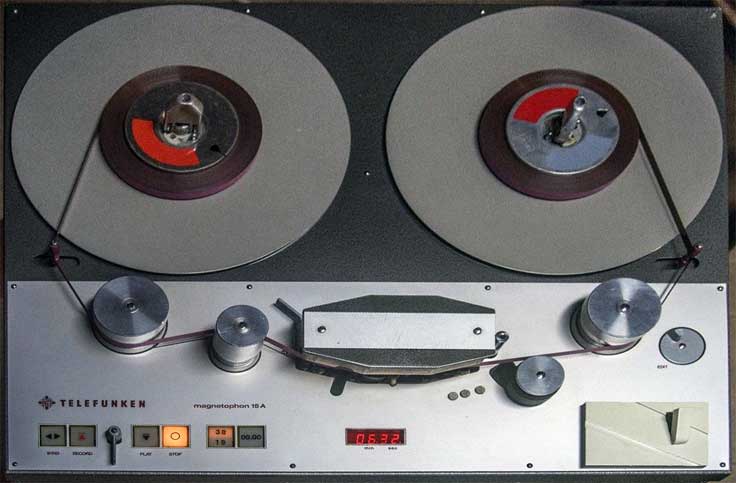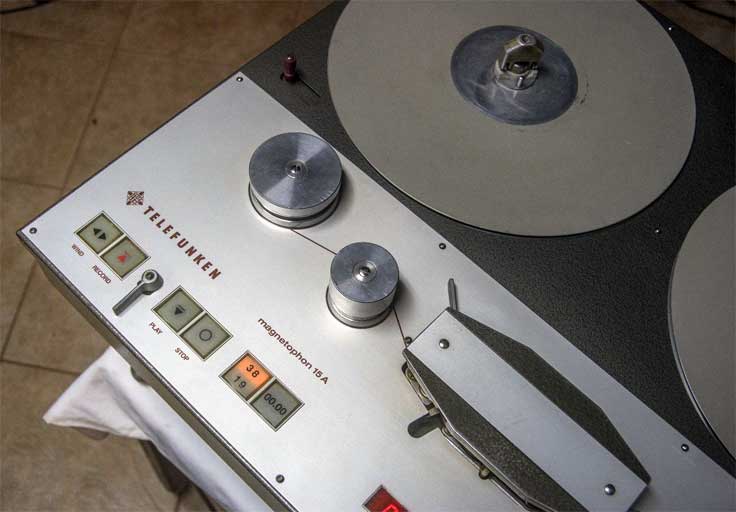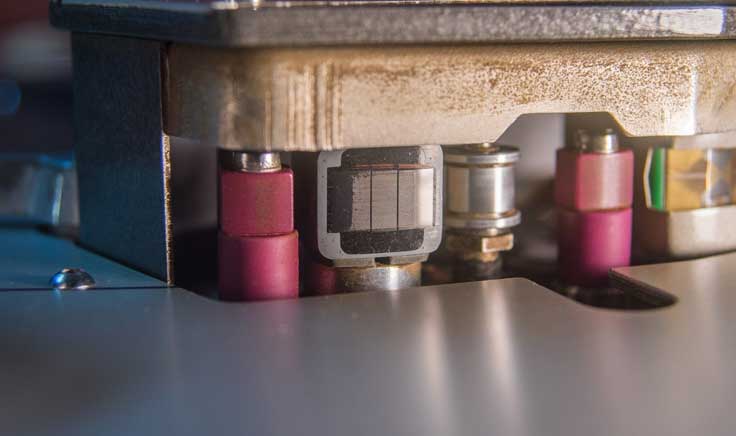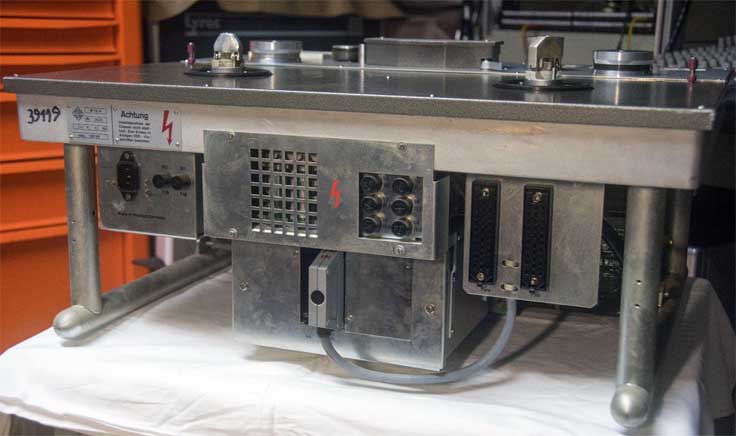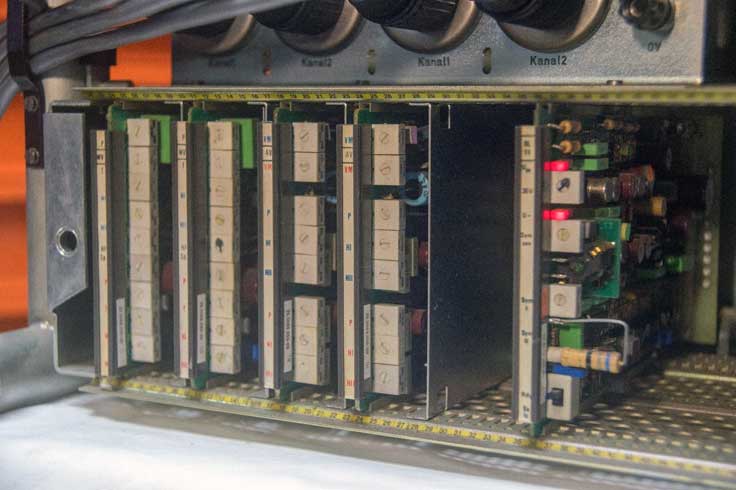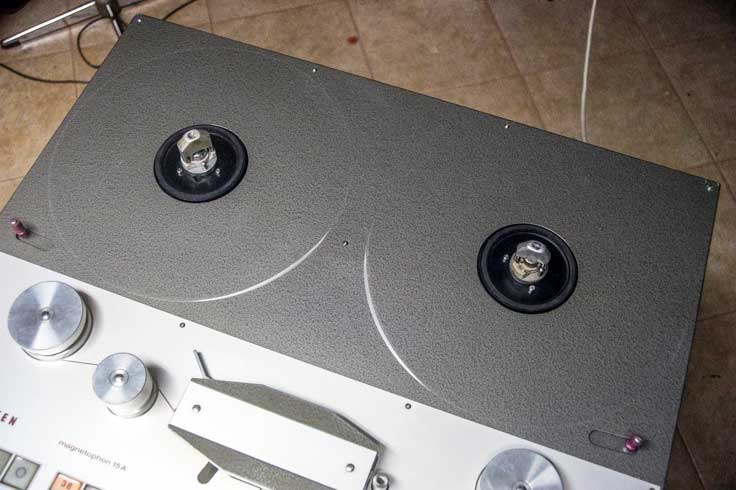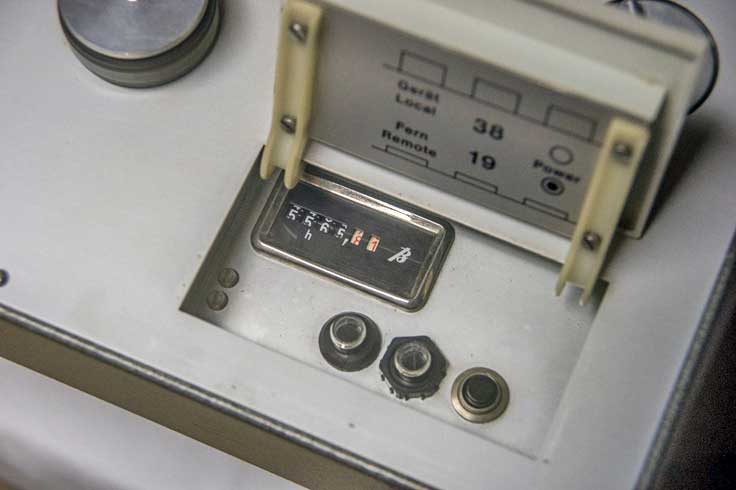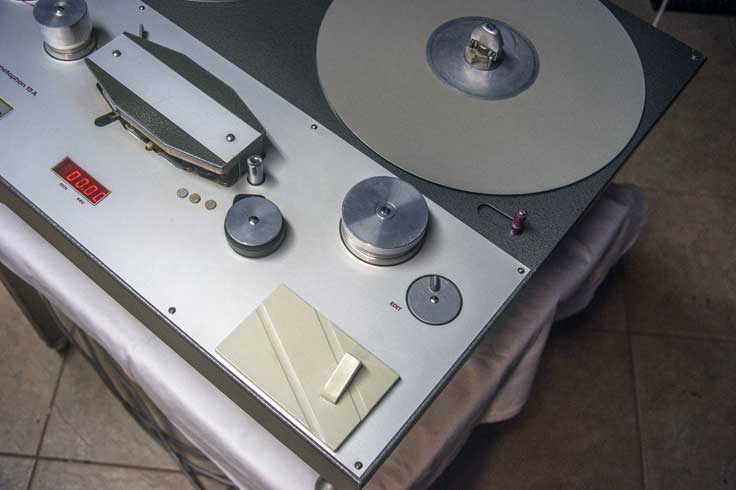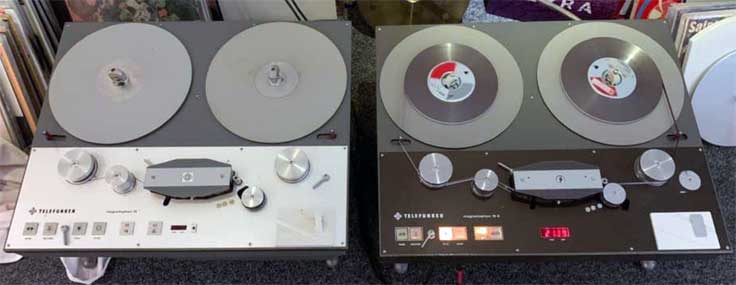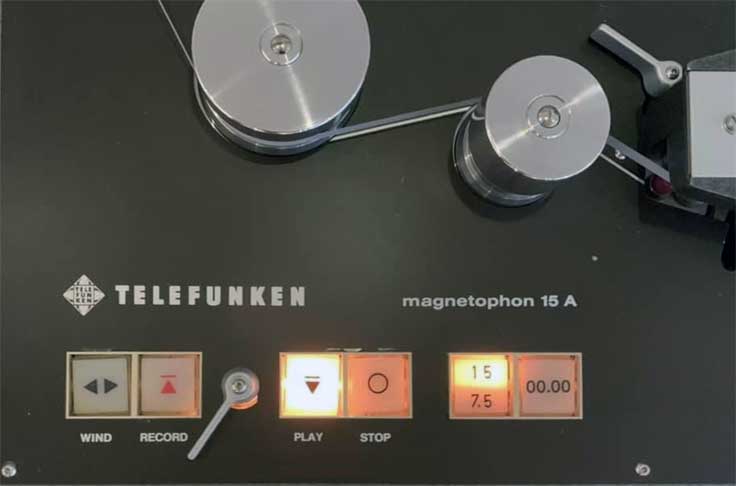Telefunken See also AEG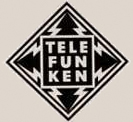
Telefunken Holding AG,Frankfurt, Germany - 1903 - present
Currently, Telefunken is the owner of more than 20,000 patents and active in over 130 countries around the globe
The world tour of the Graf Zeppelin airship in 1929 got off the ground by using Telefunken transmitters, receivers and directional equipment exclusively.
 More: Around the start of the 20th century, two groups of German researchers worked on the development of techniques for wireless communication. The one group at AEG, led by Adolf Slaby and Georg Graf von Arco, developed systems for the Kaiserliche Marine; the other one, under Karl Ferdinand Braun, at Siemens, for the German Army. Their main competitor was the British Marconi Company.
More: Around the start of the 20th century, two groups of German researchers worked on the development of techniques for wireless communication. The one group at AEG, led by Adolf Slaby and Georg Graf von Arco, developed systems for the Kaiserliche Marine; the other one, under Karl Ferdinand Braun, at Siemens, for the German Army. Their main competitor was the British Marconi Company.
When a dispute concerning patents arose between the two companies, Kaiser Wilhelm II urged both parties to join efforts, creating Gesellschaft für drahtlose Telegraphie System Telefunken ("The Company for Wireless Telegraphy Ltd.") joint venture on 27 May 1903, with the disputed patents and techniques invested in it. On April 17, 1904, the company changed its name to "Telefunken, Gesellschaft für drahtlose Telegraphie."
On 17 April 1923, it was renamed Telefunken, The Company for Wireless Telegraphy. Telefunken was the company's telegraphic address. The first technical director of Telefunken was Count Georg von Arco.
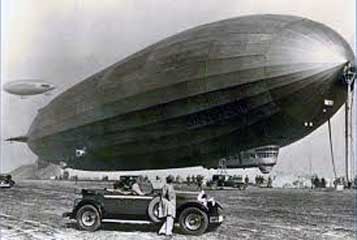 Telefunken rapidly became a major player in the radio and electronics fields, both civilian and military. During World War I, they
Telefunken rapidly became a major player in the radio and electronics fields, both civilian and military. During World War I, they  supplied radio sets and telegraphy equipment for the military, as well as building one of the first radio navigation systems for the Zeppelin force. The Telefunken Kompass Sender operated from 1908 to 1918, allowing the Zeppelins to navigate throughout the North Sea area in any weather. The world tour of the Graf Zeppelin airship in 1929 got off the ground by using Telefunken transmitters, receivers and directional equipment exclusively.
supplied radio sets and telegraphy equipment for the military, as well as building one of the first radio navigation systems for the Zeppelin force. The Telefunken Kompass Sender operated from 1908 to 1918, allowing the Zeppelins to navigate throughout the North Sea area in any weather. The world tour of the Graf Zeppelin airship in 1929 got off the ground by using Telefunken transmitters, receivers and directional equipment exclusively.
Starting in 1923, Telefunken built broadcast transmitters and radio sets. In 1928, Telefunken made history by designing the V-41 amplifier for the German Radio Network. This was the very first two-stage, "Hi-Fi" amplifier. Over time, Telefunken perfected their 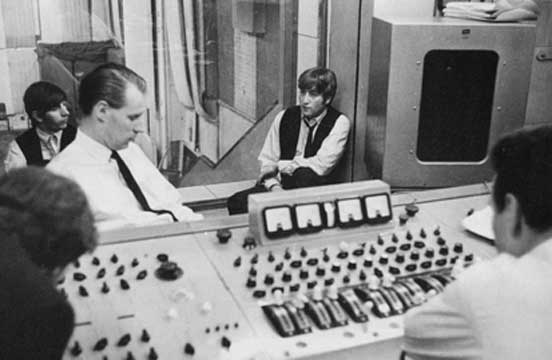 designs and in 1950 the V-72 amplifier was developed. The TAB (a manufacturing subcontractor to Telefunken) V-72 soon became popular with other radio stations and recording facilities. The V-72S was the only type of amplifier found in the REDD.37 console used by the Beatles at Abbey Road Studios on many of their early recordings. In 1932, record players were added to the product line.
designs and in 1950 the V-72 amplifier was developed. The TAB (a manufacturing subcontractor to Telefunken) V-72 soon became popular with other radio stations and recording facilities. The V-72S was the only type of amplifier found in the REDD.37 console used by the Beatles at Abbey Road Studios on many of their early recordings. In 1932, record players were added to the product line.
On July 26, 1932 Telefunkenplatte GmbH officially began its commercial activity with registered capital of 100,000 Reichsmarks.
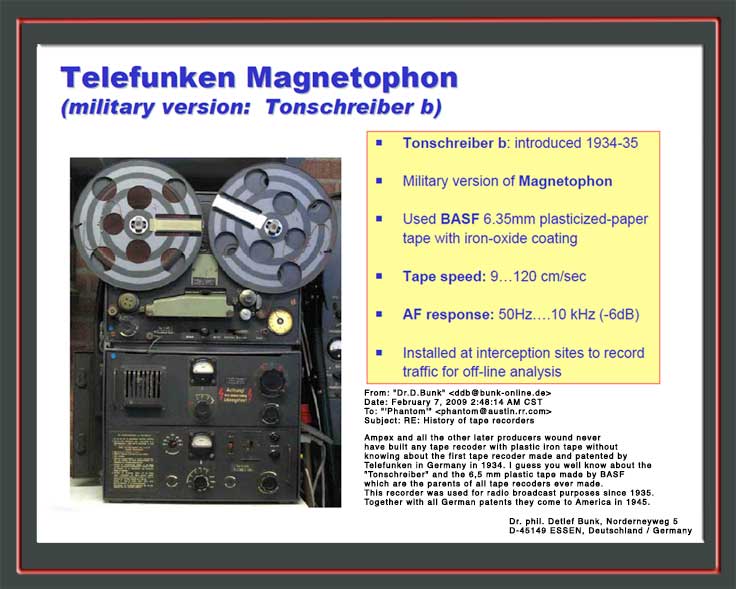 In 1941, Siemens transferred its Telefunken shares to AEG as part of the agreements known as the "Telefunken settlement", and AEG thus became the sole owner and continued to lead Telefunken as a subsidiary (starting in 1955 as "Telefunken GmbH" and from 1963 as "Telefunken AG").
In 1941, Siemens transferred its Telefunken shares to AEG as part of the agreements known as the "Telefunken settlement", and AEG thus became the sole owner and continued to lead Telefunken as a subsidiary (starting in 1955 as "Telefunken GmbH" and from 1963 as "Telefunken AG").
Magnetophon was the brand or model name of the pioneering reel-to-reel tape recorder developed by engineers of the German electronics company AEG in the 1930s
On September 24, 1941, AEG took over the 50% of Telefunken shares owned by Siemens & Halske AG Telefunken became a 100% subsidiary of AEG.
AEG engineers made rapid strides in perfecting the tape recorder system and had practical stereo recorders by 1943
Magnetophon recorders were widely used in German radio broadcasts during World War II, although they were a closely guarded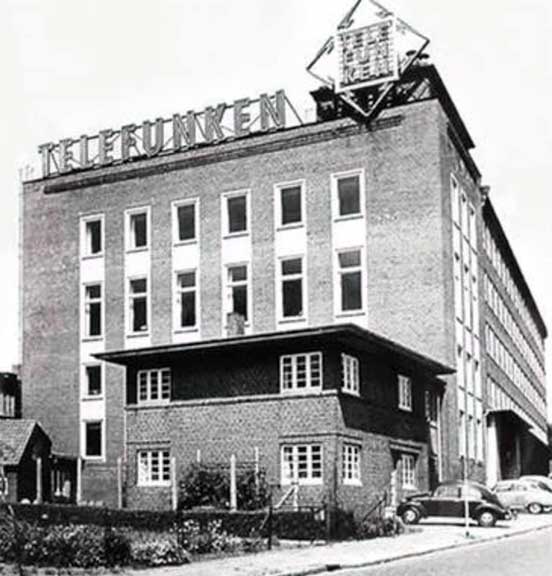 secret at the time
secret at the time
During the Second World War, Telefunken was a supplier of vacuum tubes, transmitters and radio relay systems, and developed Funkmess facilities (later referred to as radar devices by the US Navy) and directional finders, as part of the German air defence against aerial bombing. During the war, manufacturing plants were shifted to and developed in west of Germany or relocated. Thus, Telefunken, under AEG, turned into the smaller subsidiary, with the three divisions realigning and data processing technology, elements as well as broadcast, television and phono. Telefunken was also the originator of the FM radio broadcast system.
The reconstruction after the World War II posed a particularly difficult challenge to Telefunken. All production facilities and equipment were destroyed, disassembled or confiscated and many valuable experts were scattered around the world. Rebuilding began in West Germany and Berlin in 1945
The name of the company was changed to Telefunken GmbH on January 4, 1955
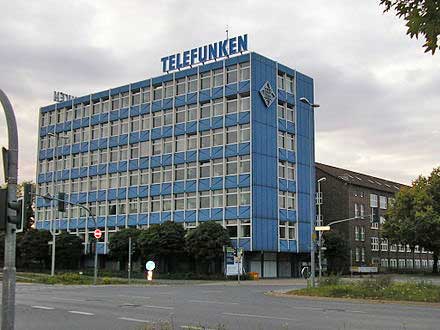 In 1959, Telefunken established a modern semiconductor works in Heilbronn, where in April 1960 production began.
In 1959, Telefunken established a modern semiconductor works in Heilbronn, where in April 1960 production began.
Telefunken GmbH became Telefunken AG on July 5, 1963.
The business activities of Telefunken were transferred to AEG effective January 1, 1967, and were continued under the combined name AEG-Telefunken.
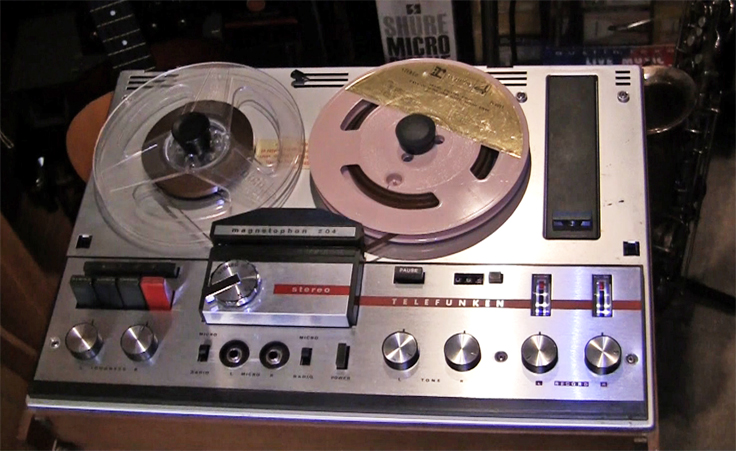 AEG-Telefunken delivered the two-millionth tape recorder, a Magnetophon 204 TS, on August 5, 1969. The 204 recorder is seen here (right) in the Reel2ReelTexas.com vintage reel tape recorder recording collection.
AEG-Telefunken delivered the two-millionth tape recorder, a Magnetophon 204 TS, on August 5, 1969. The 204 recorder is seen here (right) in the Reel2ReelTexas.com vintage reel tape recorder recording collection.
The works was expanded several times, and in 1970 a new 6-storey building was built at the northern edge of the area. At the beginning of the 1970s it housed approximately 2,500 employees.
Telefunken, through the subsidiary company Teldec (a joint venture with Decca Records), was for many decades one of the largest German record companies, until Teldec was sold to WEA in 1988.
In 1967, Telefunken was merged with AEG, which was then renamed to AEG-Telefunken. In the beginning of the 1960s, Walter Bruch developed the PAL-colour television system for the company, in use by most countries of the western Hemisphere (except United States, Canada, Mexico and the western part of South America). PAL is established i.e. in the United Kingdom (PAL-I) and, except France, many other European countries -–also in Brazil (PAL-M), Argentina (PAL-N), South Africa, India and Australia.
The mainframe computer TR 4 was developed at Telefunken in Backnang, and the TR 440 [de] model was developed at Telefunken in Konstanz, including the first ball-based mouse named Rollkugel in 1968. The computers were in use at many German university computing centres from the 1970s to around 1985. The development and manufacture of large computers was separated in 1974 to the Konstanz Computer Company (CGK). The production of mini- and process computers was integrated into the automatic control engineering division of AEG. When AEG was bought by Daimler in 1985, "Telefunken" was dropped from the company name.
In the 1970s and early 1980s, Telefunken was also instrumental in the development of high quality audio noise reduction systems, including telcom c4 [de] (marketed since 1975), High Com (marketed since 1978), High Com II, High Com III, High Com FM, and CX (1982).
In 1995, Telefunken was sold to Tech Sym Corporation (owners of Continental Electronics Corporation of Dallas) for $9 million. However, Telefunken remained a German company.
In 2005, Telefunken Sender Systeme Berlin changed its name to Transradio SenderSysteme Berlin AG. The name "Transradio" dates back to 1918, when Transradio was founded as a subsidiary of Telefunken. A year later, in 1919, Transradio made history by introducing duplex transmission. Transradio has specialized in research, development and design of modern AM, VHF/FM and DRM broadcasting systems.
In August 2006, it was acquired by the Turkish company Profilo Telra, one of the largest European manufacturers of TV-devices, with brand-owner Telefunken Licenses GmbH granting a license for the Telefunken trademark rights and producing televisions under that name.
In 2000, Toni Roger Fishman acquired the diamond-shaped logo and the Telefunken brand name from Telefunken Licenses for use in North America. The company "Telefunken USA" was incorporated in early 2001 to provide restoration services and build exact reproductions of vintage Telefunken microphones. In 2003, Telefunken USA won a TEC Award for Studio Microphone Technology for their exact reproduction of the original Ela M 250 / 251 Microphone system. Telefunken USA has since received several TEC Awards nominations for the following microphone systems: the Telefunken USA M12 or C12 (originally developed by AKG), the R-F-T M16 MkII, and the AK47. The Historic Telefunken Ela M251 microphone system entered the MIX foundation's Hall of fame in 2006. In 2008, Telefunken USA won a second TEC Award for its new Ela M 260 microphone.
As a result of a conference held in Frankfurt in May 2009, Telefunken USA has been renamed Telefunken Elektroakustik ("Electrical Acoustics") Division of Telefunken and awarded the exclusive rights to manufacture a wide variety of professional audio products and vacuum tubes bearing the Telefunken trademark in over 27 countries. Telefunken Elektroakustik now uses the Telefunken trademark for professional audio equipment and component-based electronics, such as capacitors, transformers, vacuum tubes in Asia, Europe, North America, Oceania and South America.
Business fields
The old Telefunken company had produced an extensive product spectrum of devices and systems from 1903 to 1996. Common characteristics are the authority for high frequency and communications technology and the construction unit and infrastructure technology necessary for it. Among other things:
• Energy-saving lighting technology
• Analogue computers
• Voucher recognition, pattern recognition and letter sorting
• Data communications networks
• Digital computer for exchange technique, air traffic control, scientific, military applications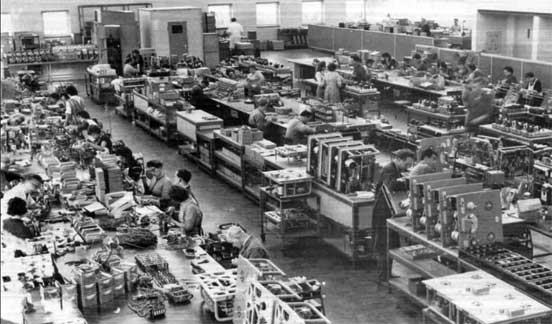
• Electrical elements
• Electro-acoustic plants and studio equipment
• Flight guidance systems
• Guidance and weapon deployment systems
• Radio and data communication for applications of military
• Radios for authority and operating radio
• Semiconductors, circuits, solar cells, infrared modules
• Mobile radio engineering
• Direction finder and detection
• Phono and tape decks, videodisc
• Power tools
• Radar facilities for soil, flight and ship monitoring
• Radio and TV home receivers
• Vacuum tubes
• Radio relay link and satellite technology
• Records
• Sending and receipt tubes, travelling field tubes, color image tubes
• Transmitters for broadcast and television, DAB transmitters
• Speech recognition
• Telephone, long-distance traffic, cable technology.
(Above) Telefunken manufacturing the M10 reel to reel tape recorder
Locations and manufacturing plants
FE I – Telefunken's first Television set using CRT (ca.1932)
Into the 1930s years, production was made after a distributor in the workshops of the two parent companies. The company headquarters was located in Berlin Kreuzberg, Hallesches Ufer 30 (1918–37).
The first commercially made electronic television sets with cathode ray tubes were manufactured by Telefunken in Berlin in 1932.
Starting from 1938, manufacturing and developing plants were concentrated at the new headquarters (until 1945) in Berlin Zehlendorf, Goerzallee.
During the Second World War, there were further manufacturing plants in the Berlin area, in Thuringia, Saxonia, Moravia, Silesia, on Rügen. In addition, in Baltic countries at Tallinn and Riga, and in occupied areas of Poland at Kraków and Łódź, floats and works were established. The vacuum tube factory Łódź was shifted with the staff in August 1944 to Ulm (Fortress Wilhelmsburg).
After the Second World War, new firm locations for development and production were established. The company headquarters was located first in Berlin-Schöneberg (1945–48), then in Berlin-Kreuzberg (1948–52), Berlin-Moabit (1952–60) and Berlin Charlottenburg (1960–67).
Production plants were located in:
Hanover, Göttinger Chaussee 76: Administration building (1959/1960) of the former Telefunken Fernseh und Rundfunk GmbH (under Cultural heritage management), right next former Huth Apparatefabrik (1940/1941)
• Backnang: Long-distance communications and cable technology (now Tesat-Spacecom)
• Berlin-Moabit, Sickingenstr. 20-26: Broadcast and television transmitters, mobile communications (since 2005 Transradio SenderSysteme Berlin AG, later simply known as Transradio)
• Berlin-Moabit, Sickingenstr. 71: Tubes (since 2005: JobCenter Berlin Mitte, employment agency)
• Berlin-Wedding (current: Gesundbrunnen), Schwedenstr.: Broadcast sets, phono and tape decks, videocassette recorders, Videodisc players
• Celle: Color television sets (1966–1997), buildings completely demolished 2001/2002
• Eiweiler: High-frequency engineering
• Hanover, Göttinger Chaussee 76: Broadcast and television sets, acoustic engineering (until 1973)
• Heilbronn: Semiconductors, circuits, solar cells, infrared modules (1998–2008 Atmel; since 2009 Telefunken Semiconductors GmbH & Co. KG (subsidiary of Tejas Silicon Holdings, UK; Insolvency of Telefunken Semiconductors in April 2013)
• Konstanz: Computer technology, letter sorting systems, character recognition technology, air traffic control systems, studio tape decks, cash dispensing machines
• Offenburg: Long-distance communications technologies
• Osterode am Harz (former Kuba-Imperial plant): Videocassette recorder
• Ulm, Danube valley: Television picture tubes
• Ulm, Elisabethenstrasse: Radar, radiolocation, detection equipment, speech and radio data transmission systems, Research Centre (2000: EADS Racoms – Radio Communication Systems; then Cassidian, part of EADS Defence & Security, today Airbus Defence and Space)
• Ulm, Söflinger Strasse: Tubes
• Wolfenbüttel: Electroacoustics (from 1973 on)
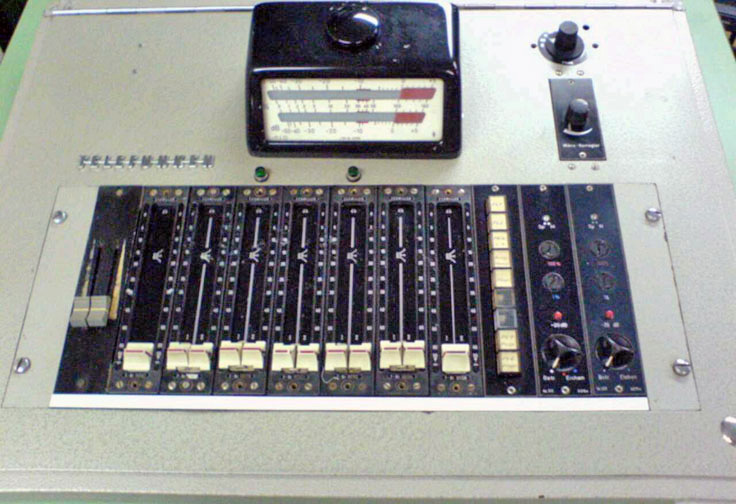
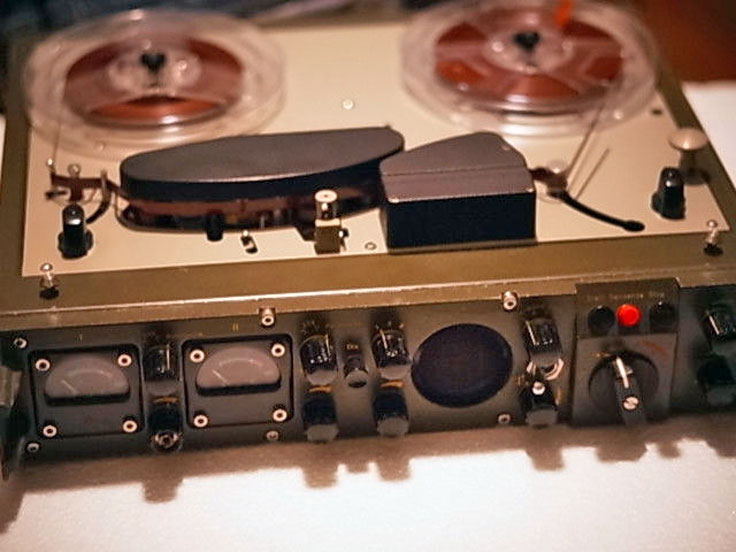
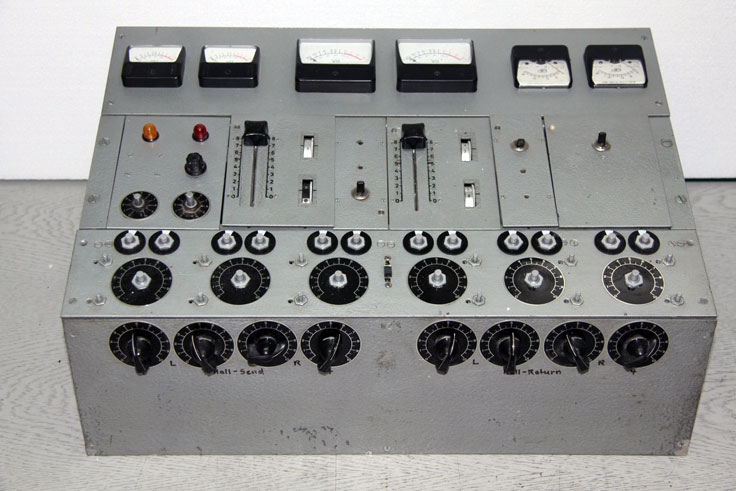
Thanks to Wojcek Czern/Rogalow Analogowy Studio for contributing these photos and comments - Video "There is only one Wojcek of Rogalowa and one such studio , where there is not a single computer, and the cells are left on the porch "
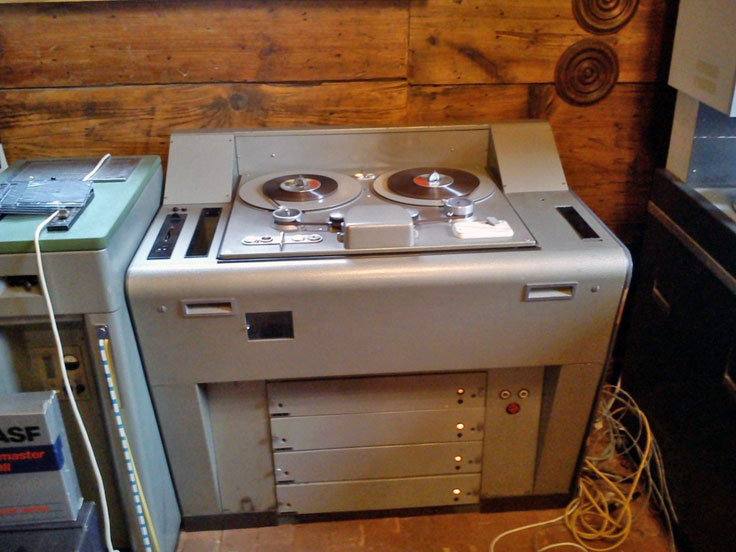 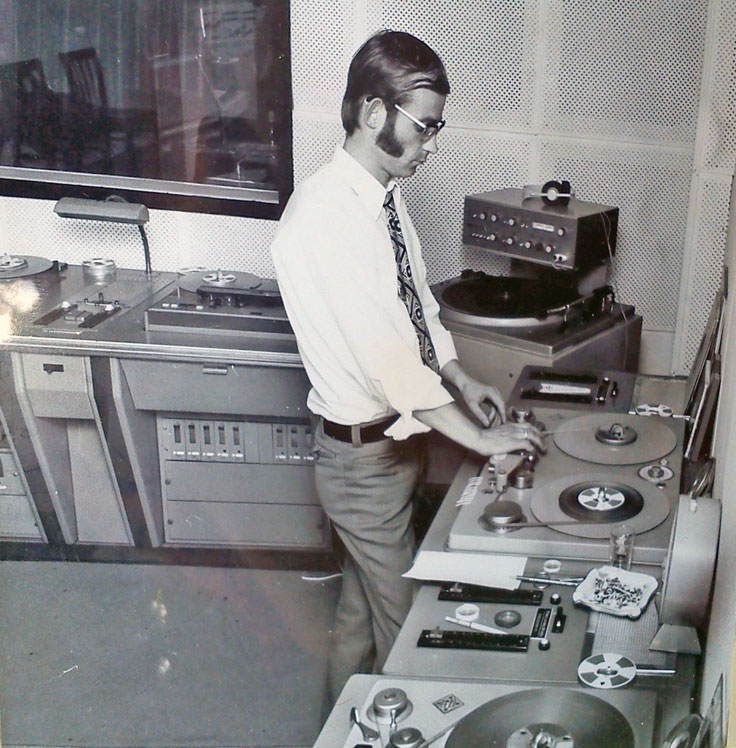 (Below) Original Telefunken M10A ¼ tube stereo master tape machine built by inventors who created the technology in the 30's. This is their flagship studio tube model of the top quality, manufactured in January 1967. It is one of the last tube tape machines ever built and this is one of the reasons it is in rather exceptional condition. Most tube Telefunken tape machines were coming with M10 transport, which suffered from a transport issue, still being one of the best ever done during the tube era. You can read more about in the net. Improved and best final transport of the era (better than Studer) was M10A, but it was installed mostly in first solid state tape machines and very few last tube machines like this one. Telefunken tape machines are built like a tank and are considered the best ever done. This M10A was their biggest panzer design ever done. Studer C37 was undoubtedly a piece of engineer art, but a few oldest and most experienced German engineers I was fortunate to meet told me the same: Telefunkens were better both mechanically and sonically. They were also originally more expensive than Studer C37. I have 4 stereo tape machines in the studio: Telefunken T9, Studer C37, Telefunken M10A solid state and this Telefunken M10A tube. I must say that Telefunken are more reliable than Studer even if I like the last one a lot too. The machine is complete with original Telefunken V86 and V87 tube preamplifiers including original Telefunken and Valvo EF804S and E80CC tubes, original butterfly stereo Telefunken headbridge and most stylish and beautiful console I ever seen. It was used in German recording studio and maintained by one of the best German tape machines tech engineer who was working in Berlin state broadcasting for many best analog years. Counter shows 6150 hours. Photo left showing original Telefunken installation. (Below) Original Telefunken M10A ¼ tube stereo master tape machine built by inventors who created the technology in the 30's. This is their flagship studio tube model of the top quality, manufactured in January 1967. It is one of the last tube tape machines ever built and this is one of the reasons it is in rather exceptional condition. Most tube Telefunken tape machines were coming with M10 transport, which suffered from a transport issue, still being one of the best ever done during the tube era. You can read more about in the net. Improved and best final transport of the era (better than Studer) was M10A, but it was installed mostly in first solid state tape machines and very few last tube machines like this one. Telefunken tape machines are built like a tank and are considered the best ever done. This M10A was their biggest panzer design ever done. Studer C37 was undoubtedly a piece of engineer art, but a few oldest and most experienced German engineers I was fortunate to meet told me the same: Telefunkens were better both mechanically and sonically. They were also originally more expensive than Studer C37. I have 4 stereo tape machines in the studio: Telefunken T9, Studer C37, Telefunken M10A solid state and this Telefunken M10A tube. I must say that Telefunken are more reliable than Studer even if I like the last one a lot too. The machine is complete with original Telefunken V86 and V87 tube preamplifiers including original Telefunken and Valvo EF804S and E80CC tubes, original butterfly stereo Telefunken headbridge and most stylish and beautiful console I ever seen. It was used in German recording studio and maintained by one of the best German tape machines tech engineer who was working in Berlin state broadcasting for many best analog years. Counter shows 6150 hours. Photo left showing original Telefunken installation.
|

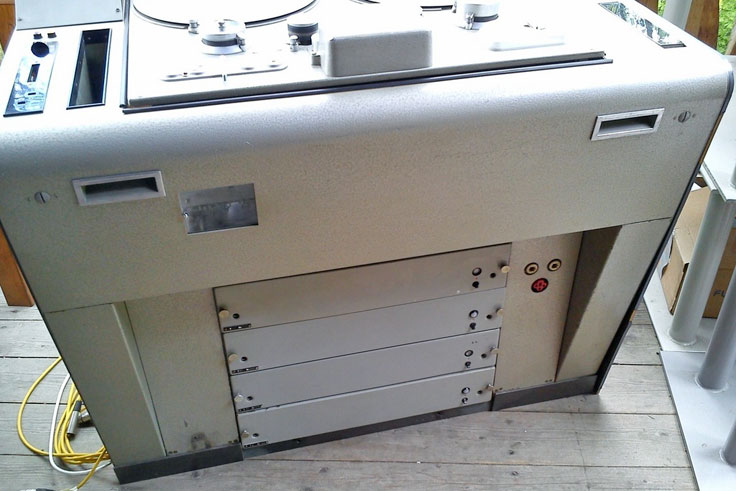
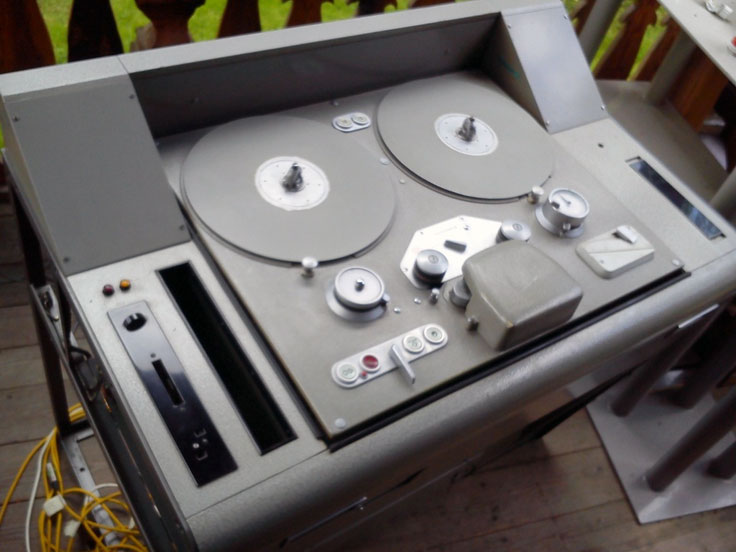


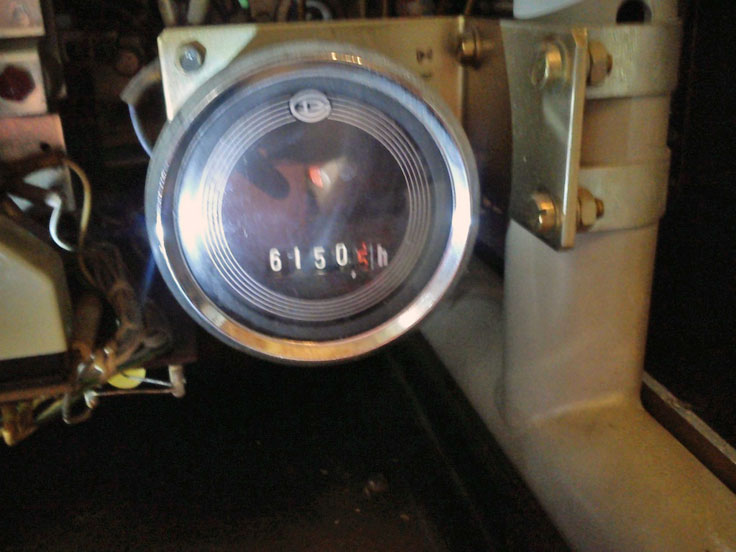
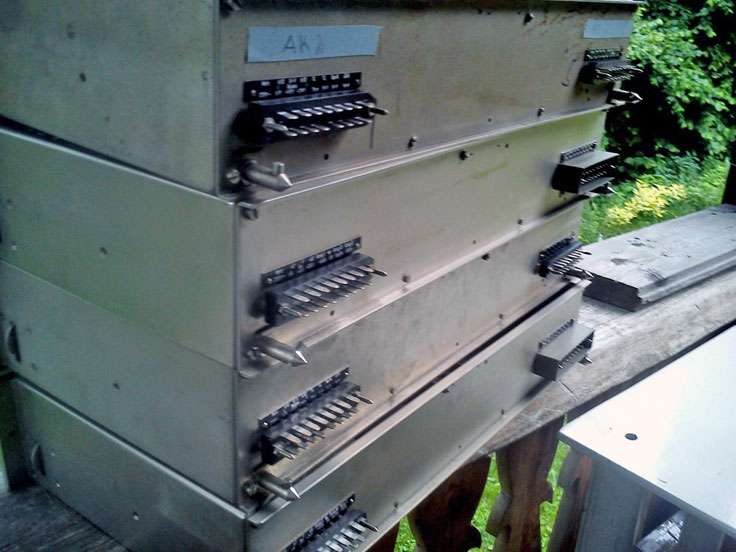
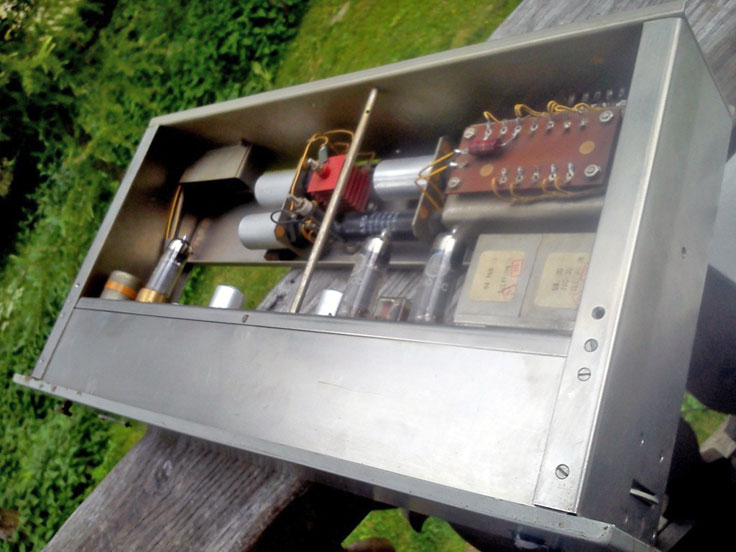


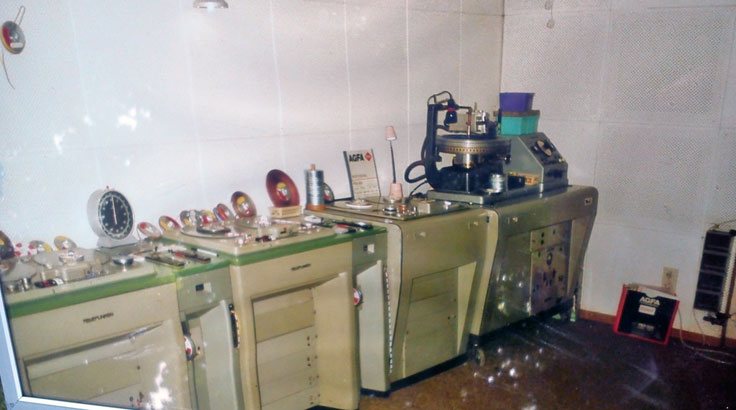
Thanks to Wojcek Czern/Rogalow Analogowy Studio for contributing these photos
Photos below provided to our museum by others
We appreciate all photos sent to our museum. We hope to successfully preserve the sound recording history. If we have not credited a photo, we do not know its origin if it was not taken by the contributor. Please let us know if a photo on our site belongs to you and is not credited. We will be happy to give you credit, or remove it if you so choose.

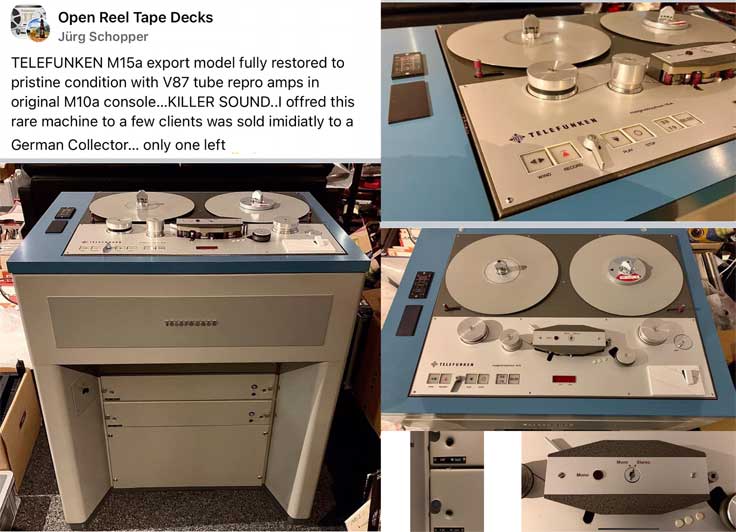
Unknown (above left) M15a Jörg Schopper (above right) Telefunken M-10 (below - unknown)
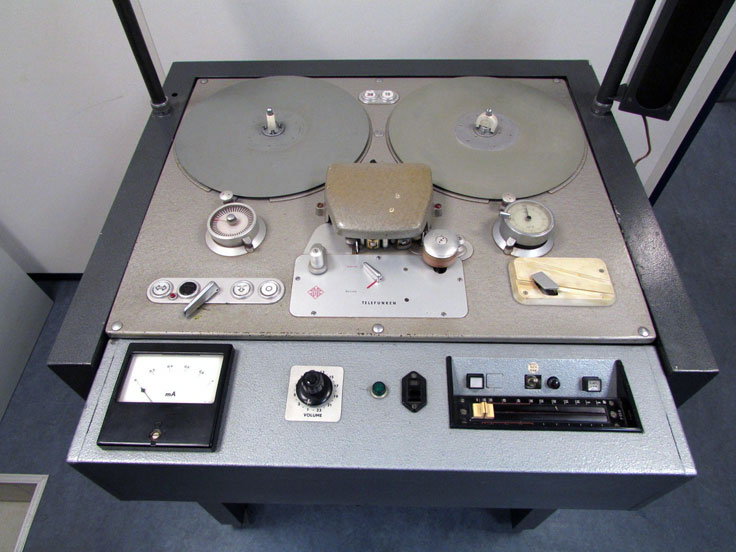
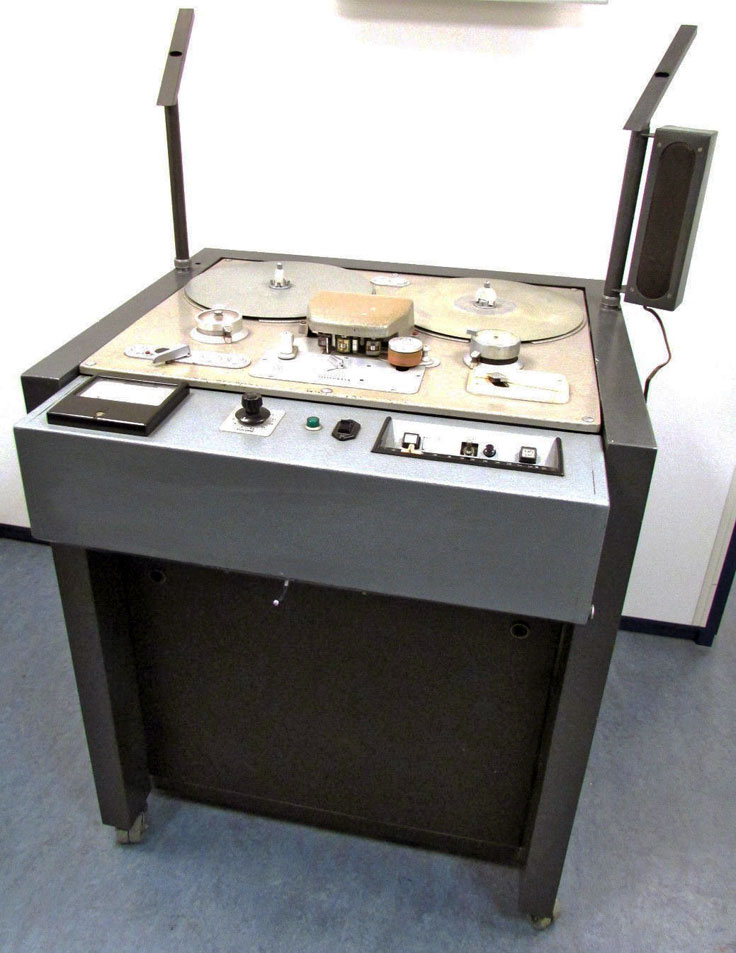
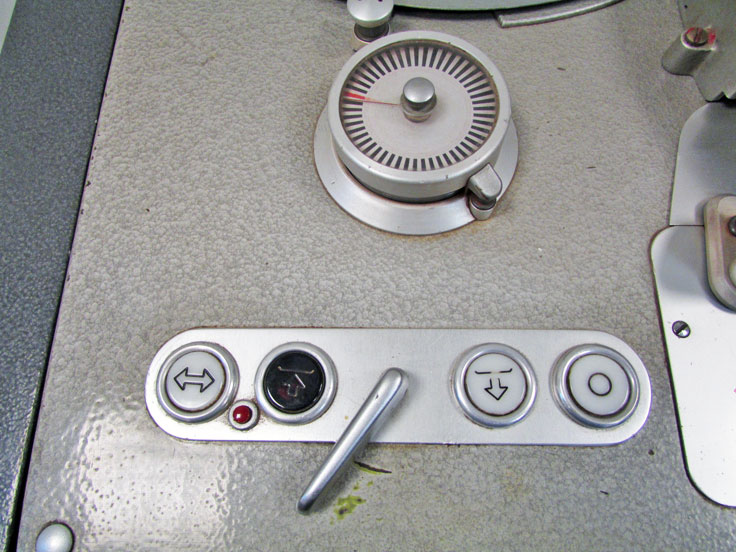

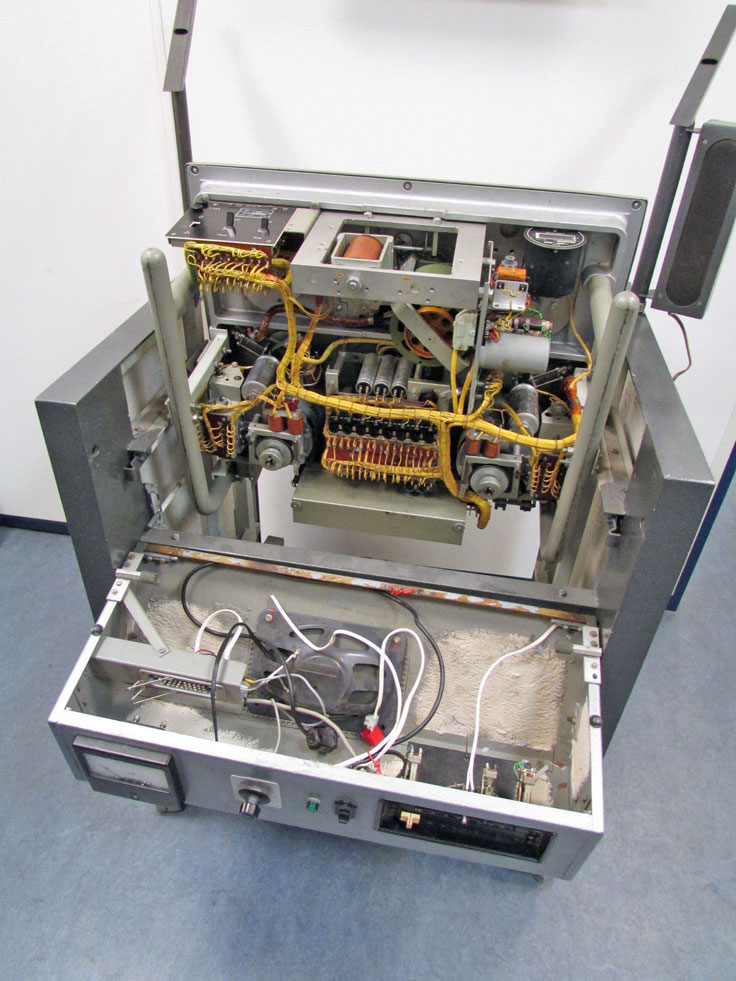
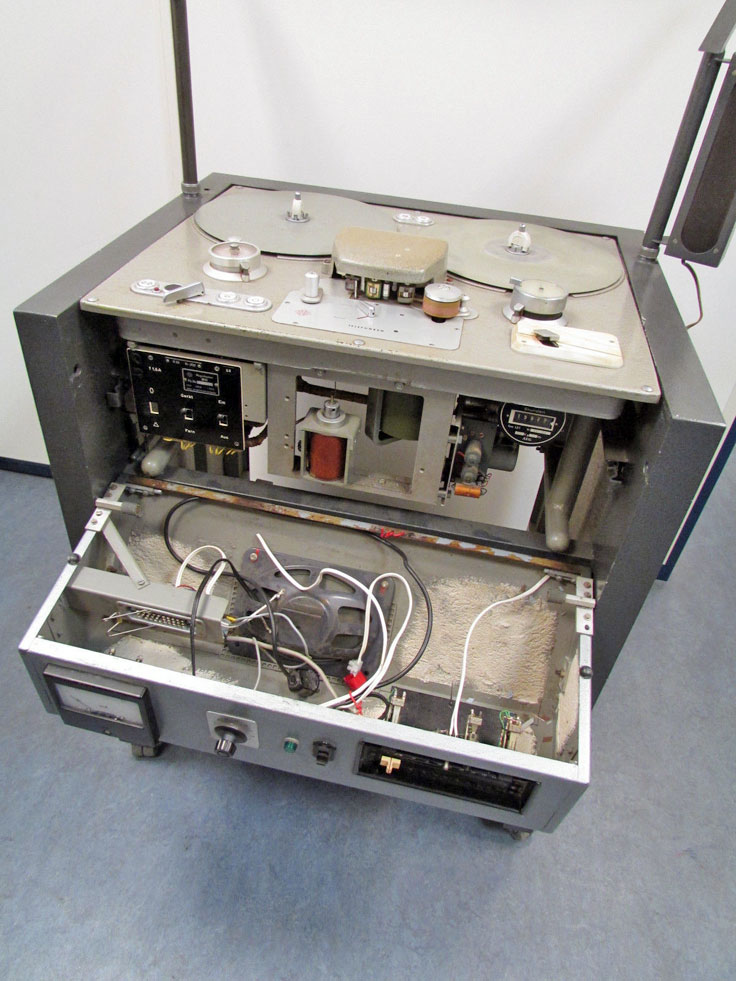
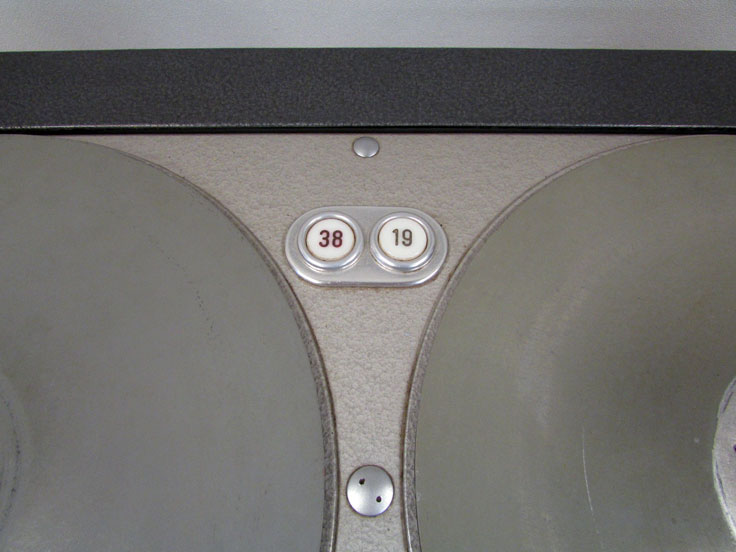
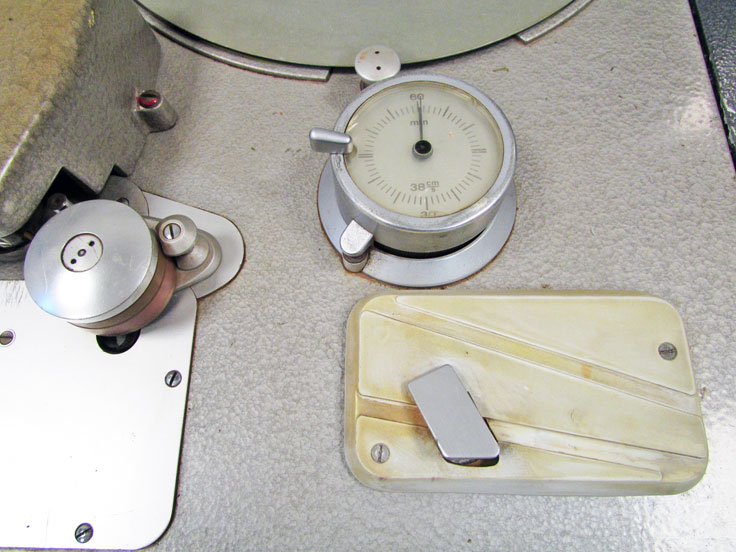
Telefunken M-12
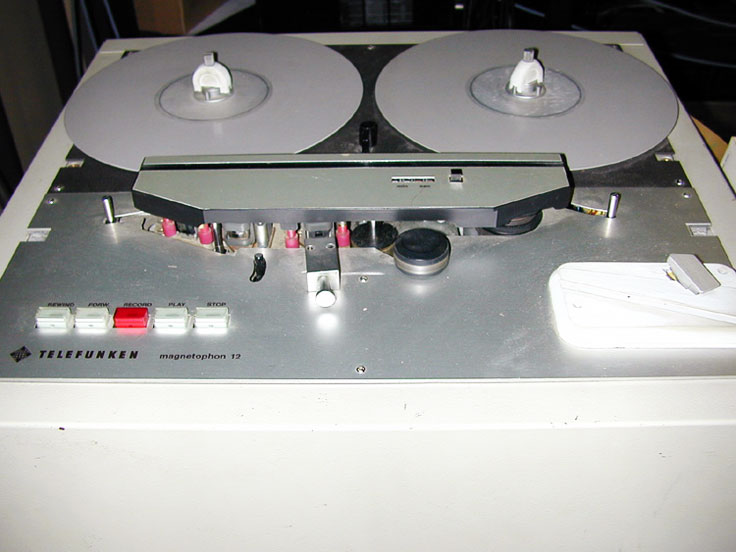
Telefunken Military reel to reel tape recorder- photos from audiotubes.de
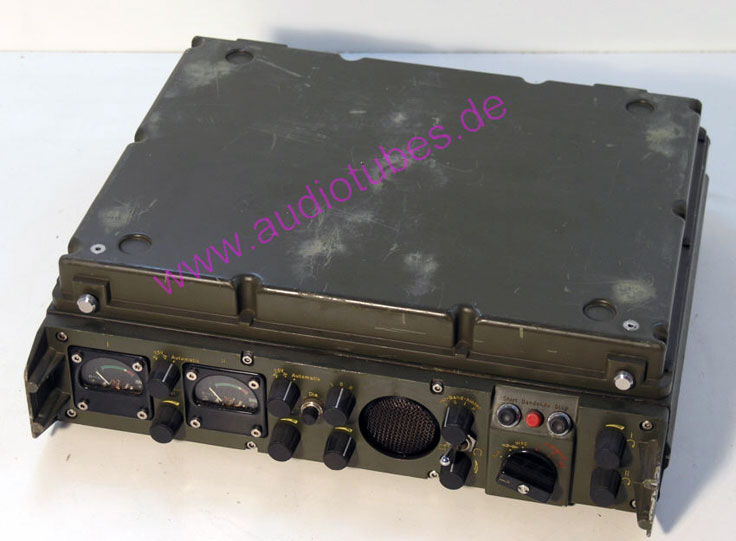
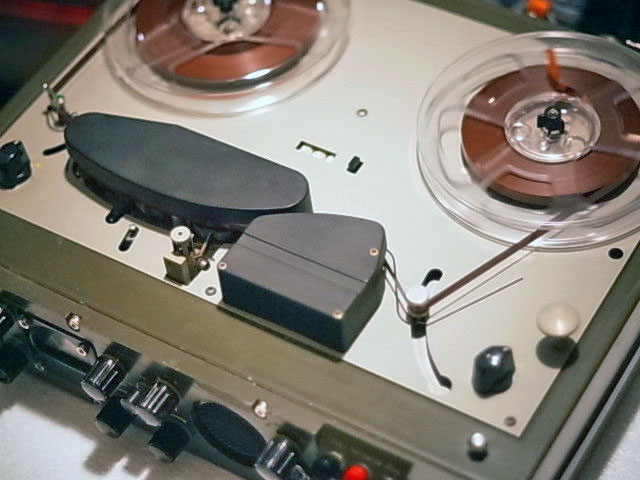
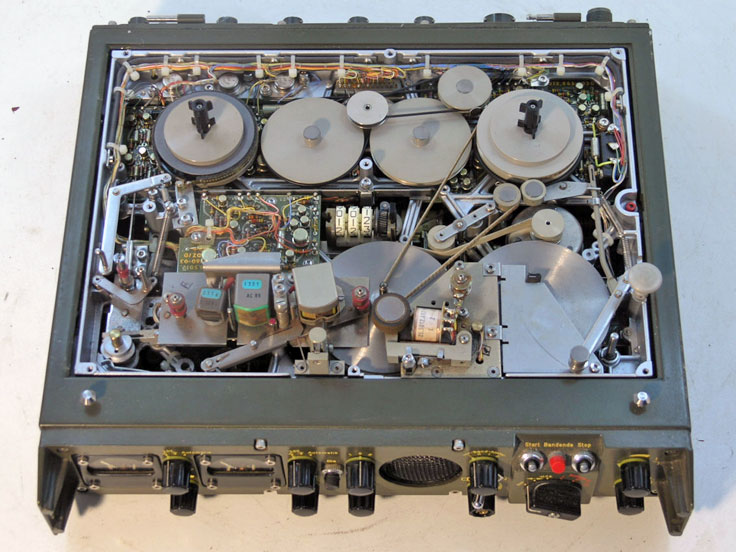
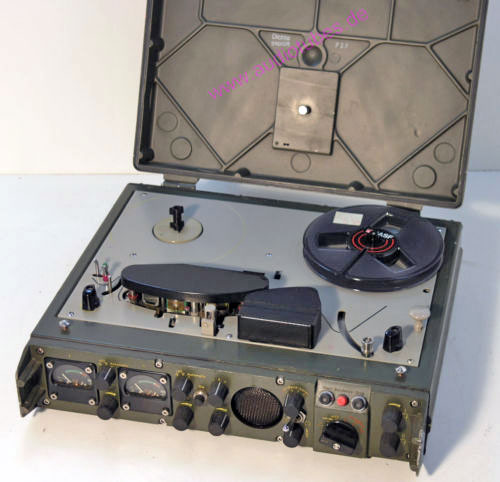
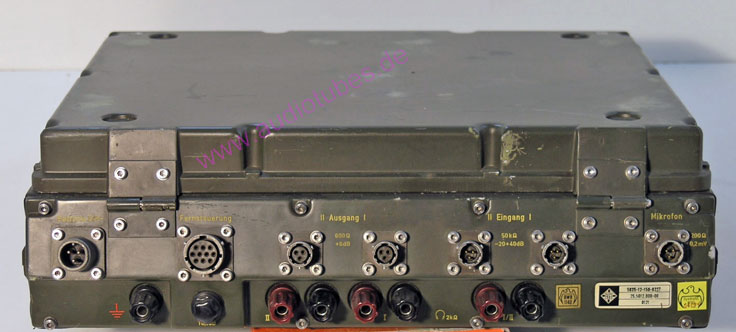
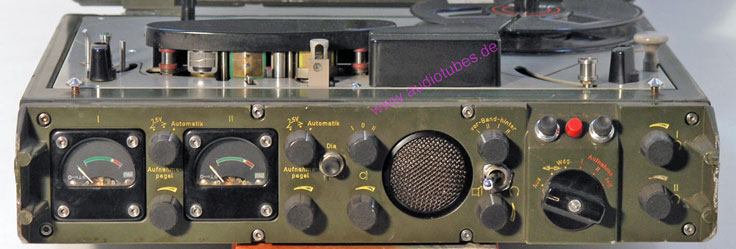


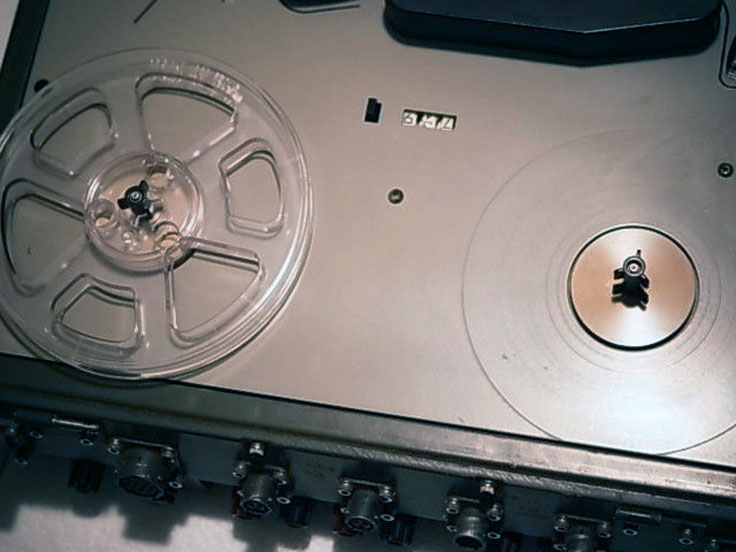
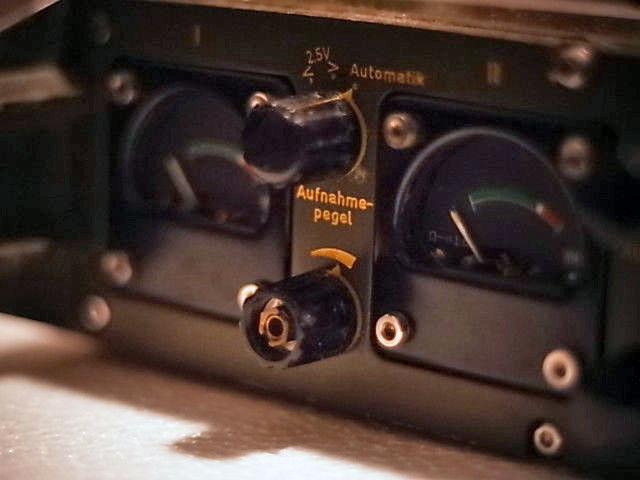

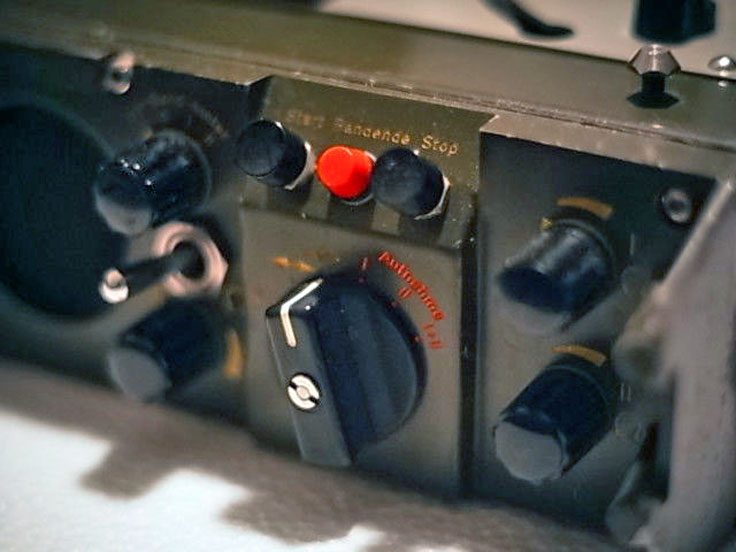
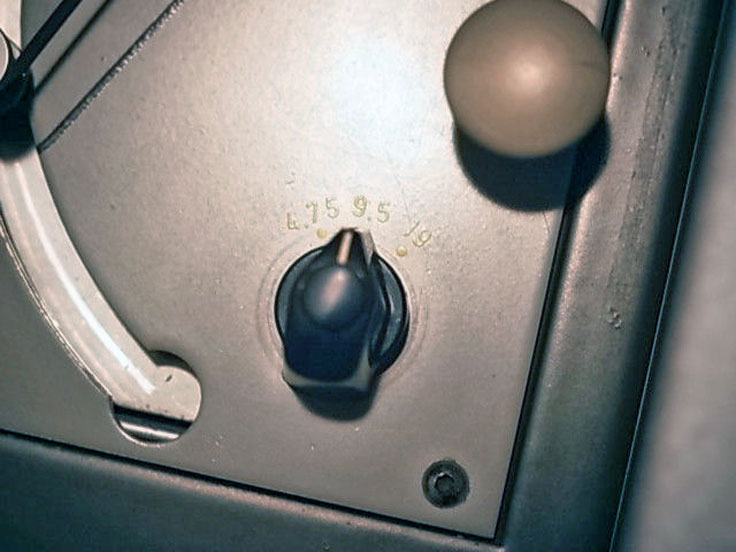

Telefunken Mix console
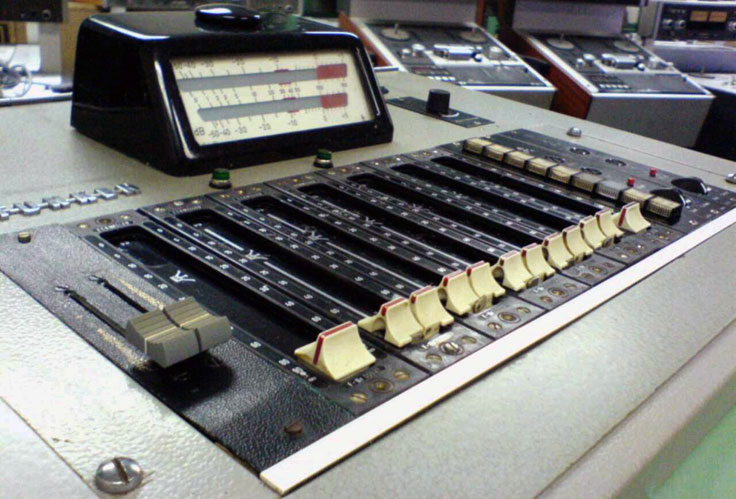
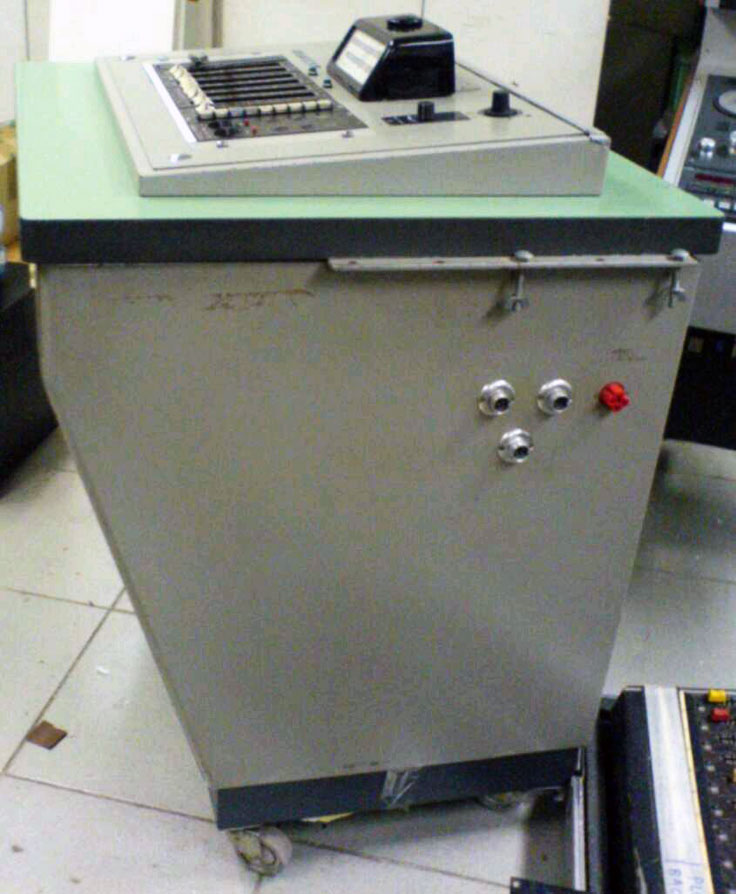

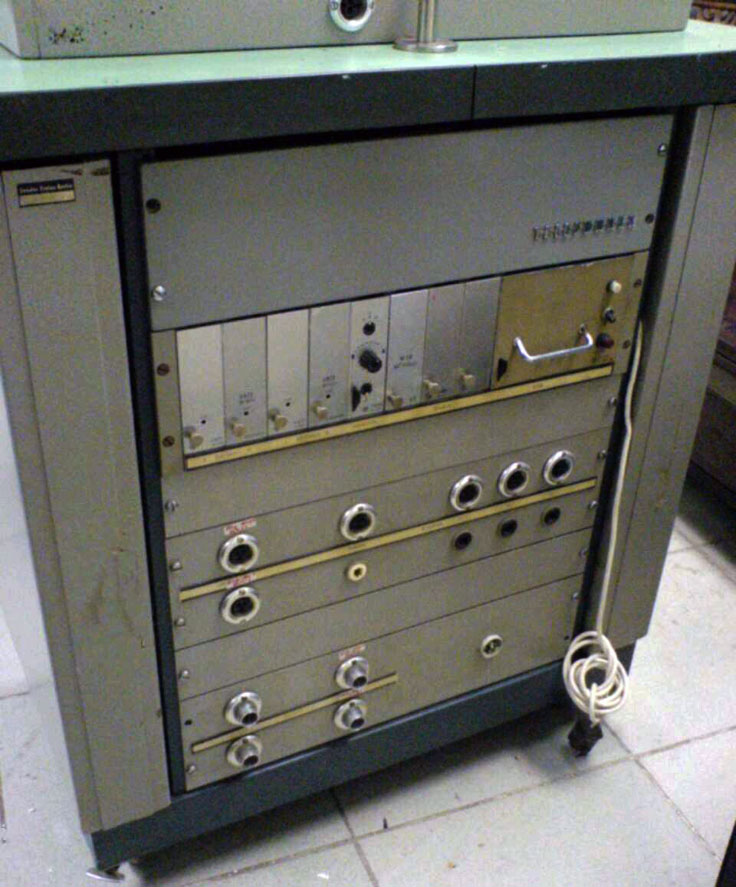
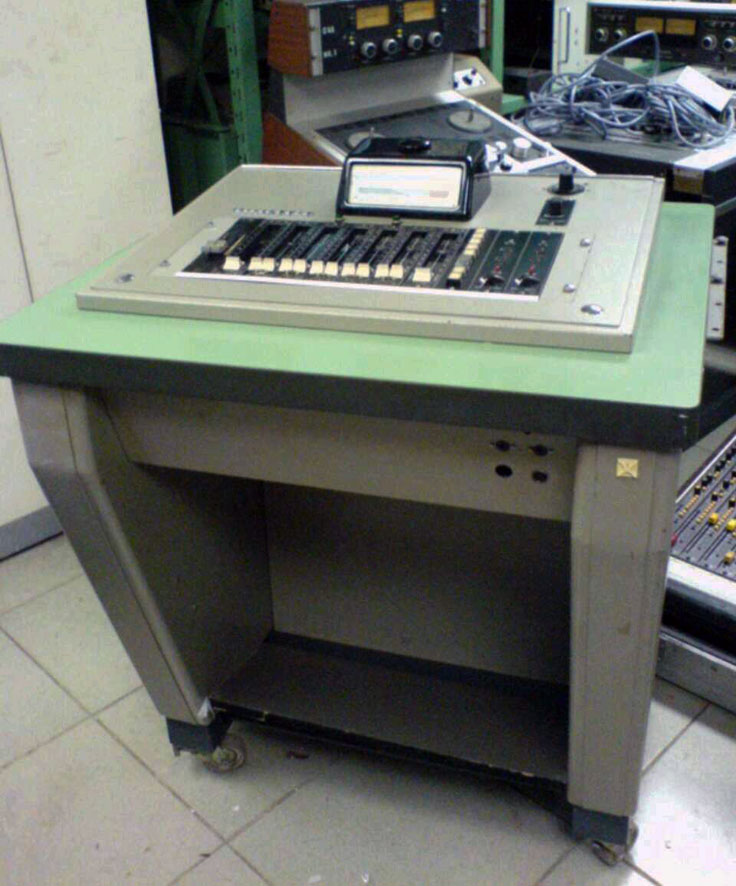


Telefunken Mix console #2

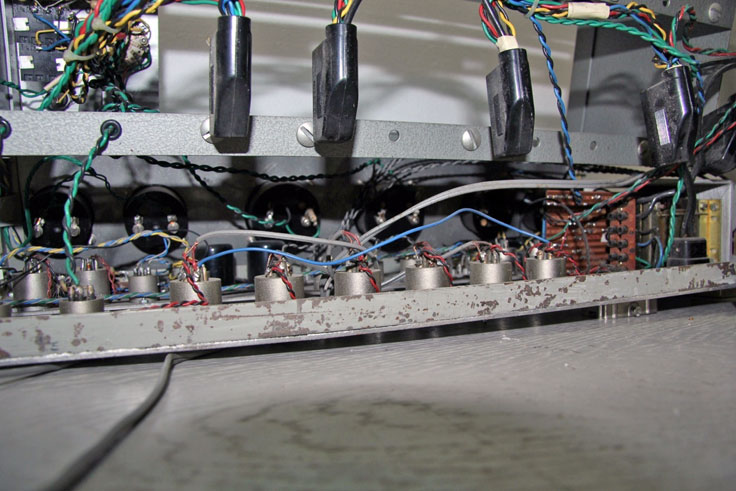
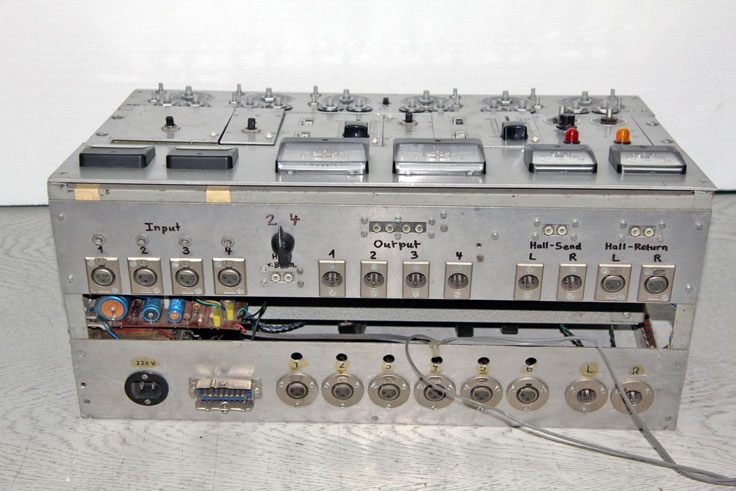
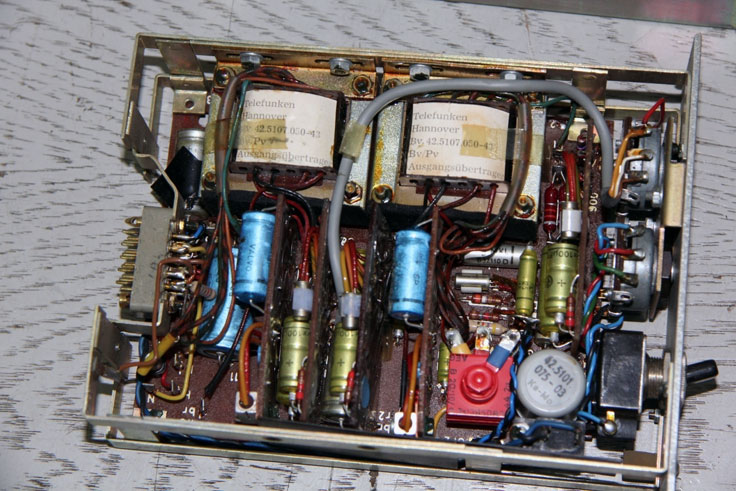
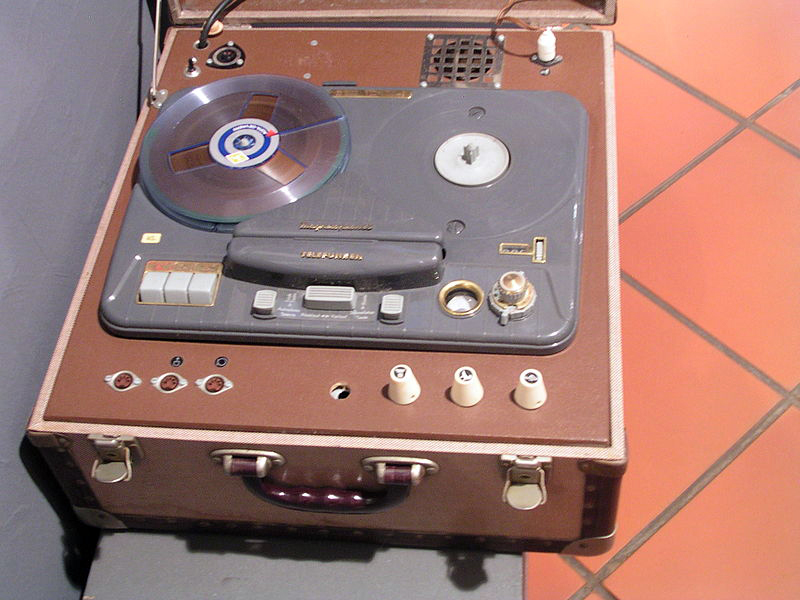
Telefunken Magnetophon 85 reel tape recorder photo by Timo Beil
AEG Telefunken AT 9
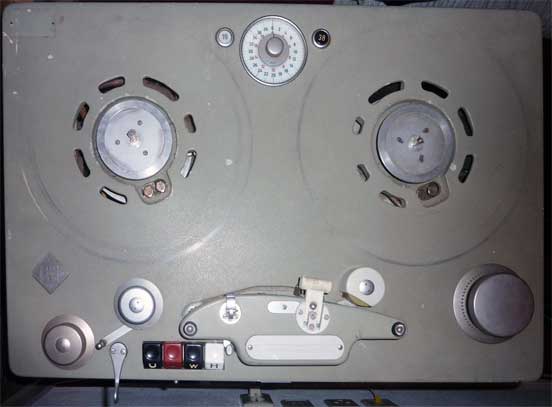


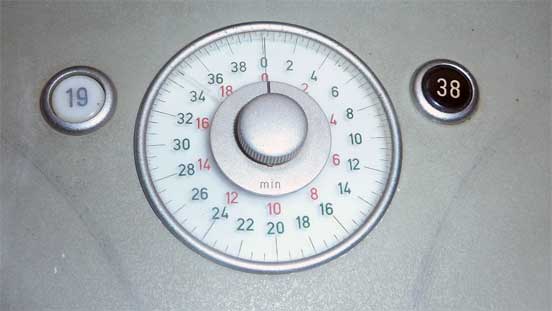

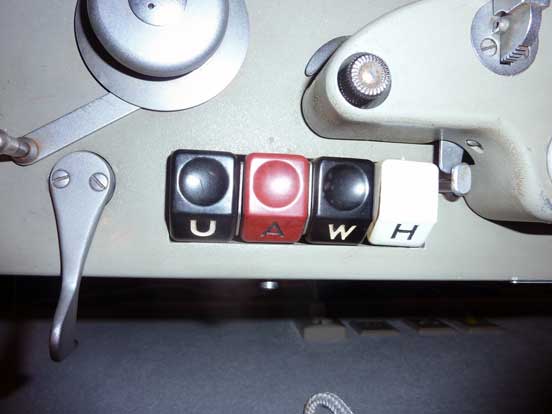
Telefunken M10
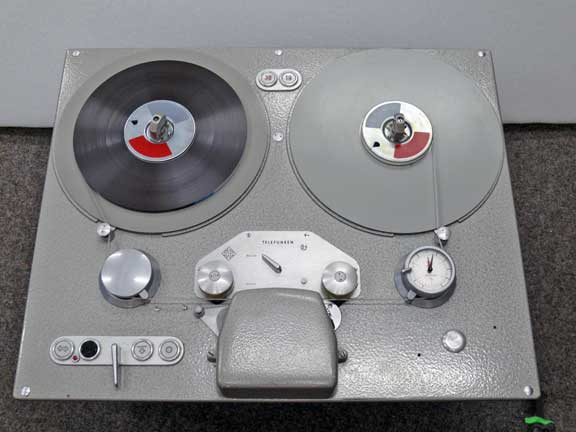


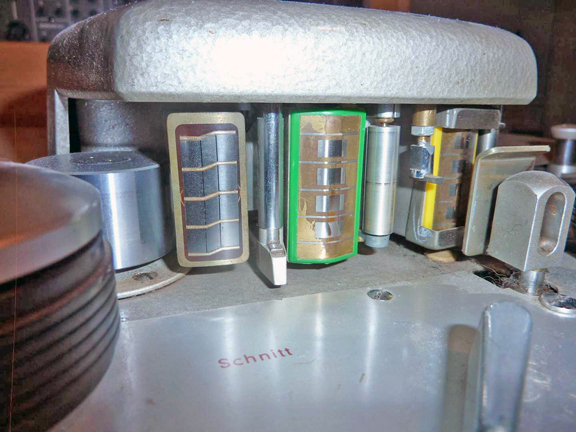

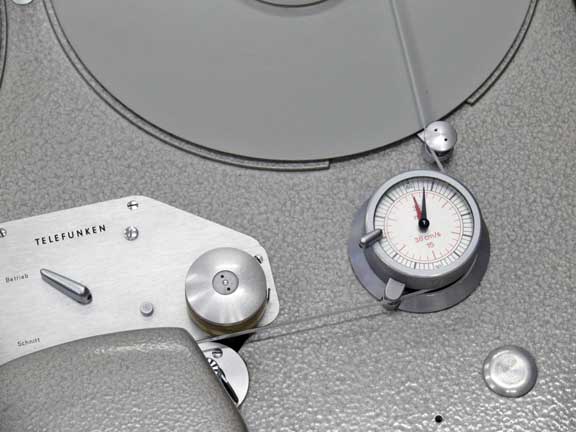
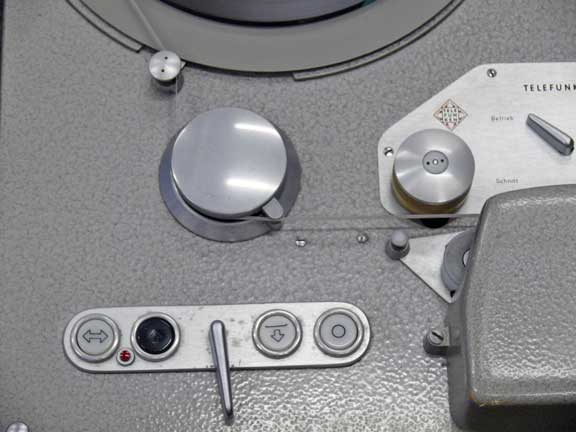

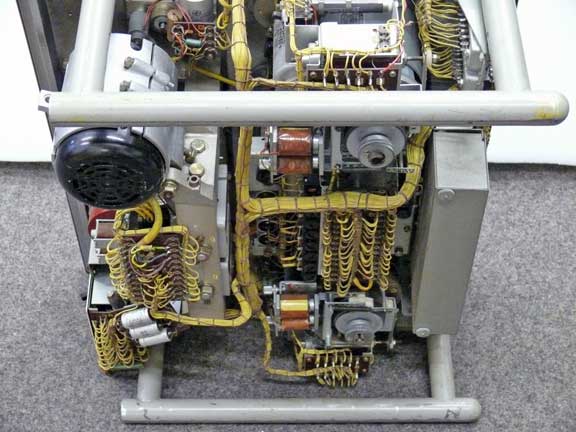
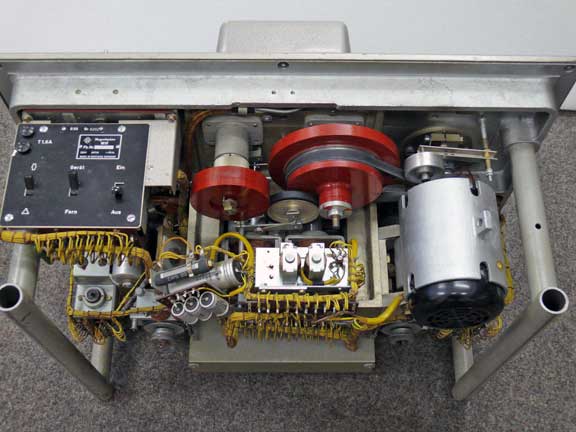


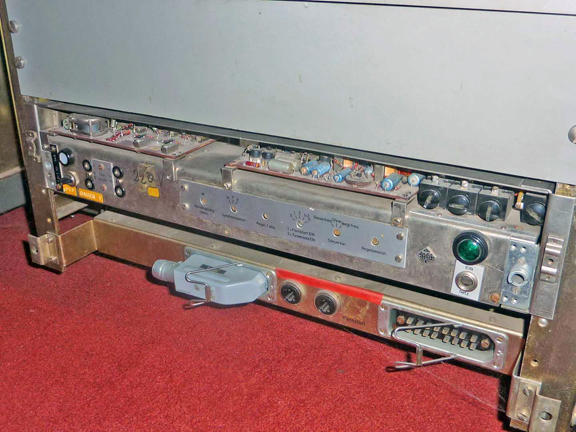


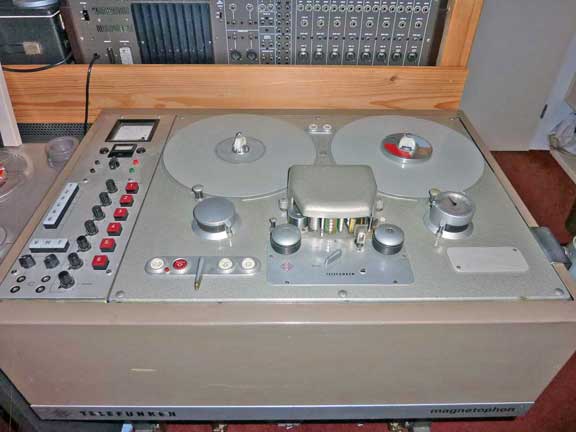
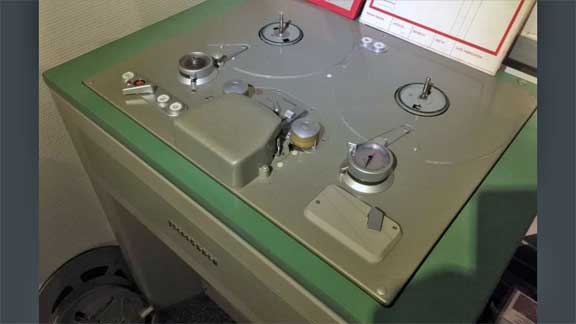
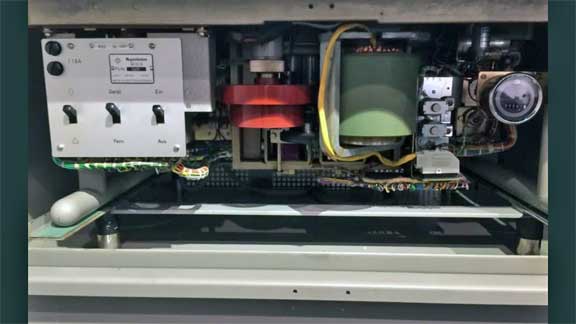
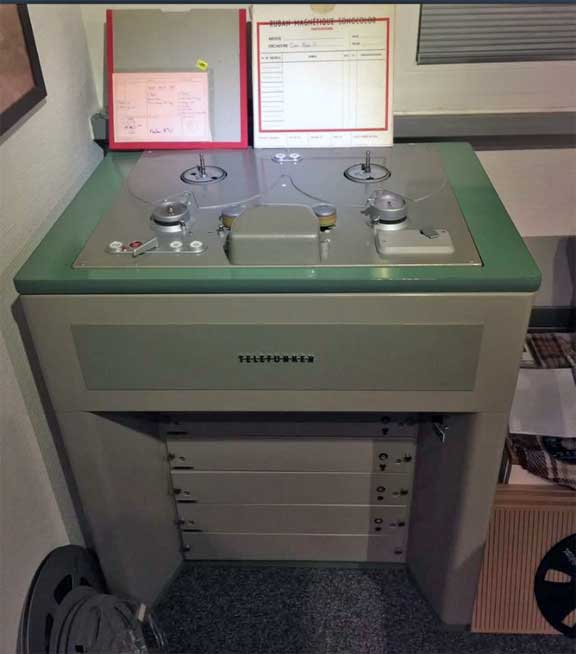
Telefunken Mixing Consoles

























































































